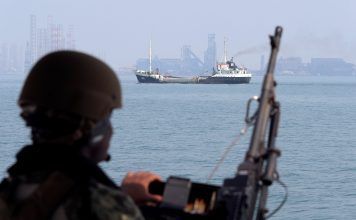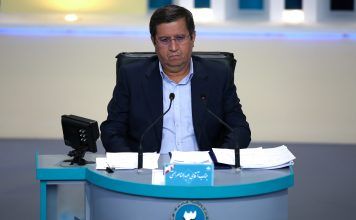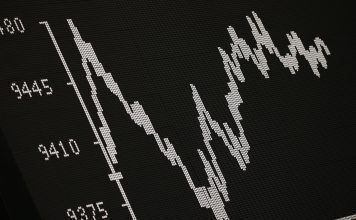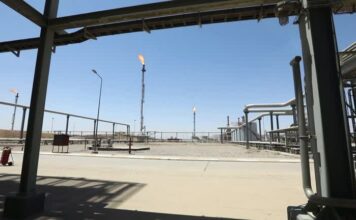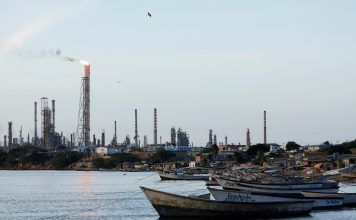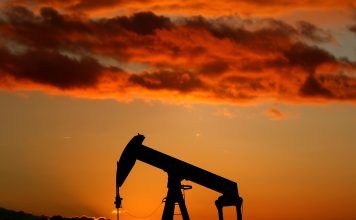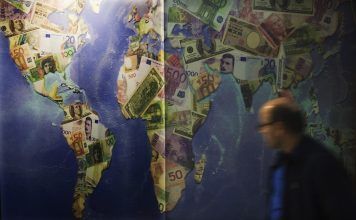Since the start of the current Iranian year on March 21, economic conditions in Iran have taken a turn for the worse.
While wages have increased by 57 percent in the past two months, the cost of goods, especially food products, including grain, has risen by 200 percent. The data shows that workers’ real wages (meaning adjusted for inflation) have dropped by 150 percent during the same period.
[aesop_image img=”https://kayhanlife.com/wp-content/uploads/2022/06/mardom-iran.jpg” panorama=”off” credit=”KL./File Photo” align=”center” lightbox=”on” captionsrc=”custom” captionposition=”left” revealfx=”off” overlay_revealfx=”off”]
Iranian society has not yet felt the full impact of the government’s 2022-23 budget deficit. Undoubtedly, prices will continue to climb in the coming months, and the purchasing power of workers will continue to decrease. Widespread poverty and discontentment among various segments of Iranian society are now posing the greatest threat to the Islamic Republic.
The Iranian new year 1401 (which began on March 21) started with a massive rise in the price of goods and food products. Although Iranians are used to the ever-increasing cost of living, many can now no longer afford to buy bread, given the recent surge.
Pasta has become most families’ staple food after the price of rice rose significantly. Yet the shortage of industrial-grade wheat flour has caused the price of bread and pasta to rise as well, making them rare and expensive food items.
The government price for one kilogram of industrial-grade wheat flour has soared from $0.1 to $.44 in a matter of days. Manufacturers also cite the increasing cost of raw materials and higher wages as reasons for the rapid price hikes.
The sudden discontinuation of the subsidy scheme for agricultural products, including industrial-grade wheat flour, has caused the price of bread, pasta, cakes, biscuits, and other confectionaries to rise.
The same phenomenon was observed in October 2019 when the government increased the price of gasoline with no prior warning.
The price of many products made with industrial-grade wheat flour has risen recently, including deli sandwiches.
[aesop_image img=”https://kayhanlife.com/wp-content/uploads/2021/07/2021-04-10T142826Z_1672883000_RC22TM96S41A_RTRMADP_3_HEALTH-CORONAVIRUS-IRAN-RESTRICTIONS-scaled.jpg” panorama=”off” credit=”FILE PHOTO: People walk in front of closed shops in Tehran, Iran. REUTERS./ ” align=”center” lightbox=”on” captionsrc=”custom” captionposition=”left” revealfx=”off” overlay_revealfx=”off”]
Meat, rice, eggs and tomato paste also continue to soar in price, and many grocery stores are limiting the amount of sugar and cooking oil that customers can buy.
Distributors predict that the price of poultry will go up in the coming weeks, as will that of cleaning and hygiene products.
Government measures to do away with the preferred foreign exchange rate has increased the price of medicine and powdered milk.
Meanwhile, housing and car prices continue to go up.
As the middle classes disappear, more people are impoverished. Many teachers and pensioners who were part of the middle classes now live in poverty.
High rents have forced many people to move out of city centers and prosperous locations and into undesirable neighborhoods and suburbs.
Economists believe that the industrial revolution created the middle class. They argue that the middle class is a country’s “engine of growth,” the force behind cultural developments and democratic change in a country. A shrinking middle class has dire social, cultural, and economic consequences for a nation.
In the past four decades, the Islamic Republic’s economic policies have severely harmed the working class. The working class traditionally included those working in mines and factories. However, today, journalists and office workers, and even those working in the private sector, are paid the minimum wage. They can now be considered to be part of the working class.
Faramarz Tofighi, the chairperson of the Islamic Republic Supreme Labor Council’s Wage Committee, released a report at the start of 2021 which put the number of Iranian workers and their households at 49 million in 2020, which is 58 percent of the country’s population.
Low wages and salaries have lowered the standard of living for a large segment of the population in the past few years. They have struggled to make ends meet and are pushed further into poverty.
Iran Executes 26 People in 10 Days Amid Protests, Human Rights Expert Says
The increasing number of teachers, pensioners, and workers whose monthly salaries and wages fall well below the official poverty threshold is an indication that a large segment of the Iranian population lives in poverty, a development that even government reports confirm.
Citing official data and reports, Ahmad Tavakoli, a member of the Expediency Council, said 60 percent of the Iranian population needed government subsidies and financial aid to make ends meet.
While most Iranians face chronic livelihood crises, a well-connected minority with close ties to the state rips the benefits of a corrupt and fake economy that does nothing to develop the country’s industry and production.
Economic data reflects people’s loss of patience with the government and state.
The Gini coefficient report on Iran shows a vast income inequality between most economically disadvantaged populations and a small minority of wealthy people.
The Gini coefficient (Gini index or Gini ratio) is a statistical measure of economic inequality in a population.
A Gini coefficient of “0” expresses perfect equality (i.e., where everyone has the same income). A Gini coefficient of “1” (or 100 percent) expresses maximal inequality among values (i.e., where only one person has all the income and all others have none).
Gini index 0.2 represents perfect income equality, 0.2–0.3 relative equality, 0.3–0.4 adequate equality, 0.4–0.5 big income gap, and above 0.5 represents severe income gap.
According to the Iranian Statistical Society, the Gini coefficient in Iran rose from 0.37 in 2011 to 0.40 in 2020.
According to the United Nations Development Program (UNPD), Iran had a Gini value of 0.459, ranking 113 out of 162 countries in 2019.
The Iranian Statistical Society also said 20 percent of the disadvantaged segment of the population’s share of the Iranian economy was only 5.8 percent. In contrast, 20 percent of those in the high-income bracket owned 47 percent of the country’s wealth.
Labor share of Gross Domestic Product (GDP) — total employee compensation as a percentage of GDP — in the Iranian economy shows that business owners and investors pocketed most of the profits.
For instance, former President Hassan Rouhani’s government claimed that the Iranian economy was bouncing back in 2017. However, in the same year, Our World in Data (OWID), an online scientific publication, reported that the labor share of GDP in Iran was only 36 percent.
The labor share of GDP for the central European countries, Canada, and the U.S. was 61 percent in 2017 and 42 percent for India.
The survey showed Iran had the lowest labor share of GDP among 15 countries, confirming that most of the capital is in the hands of a small group of influential and well-connected investors, while the bulk of the Iranian workforce lives in poverty.
The data also showed that while a segment of the country’s workforce moved abroad, the middle class continued to shrink.
Economic crisis, income inequality, and hyperinflation deeply hurt and demoralize Iranian society, a large segment of which lives in poverty.
Abject poverty and chronic discontent eventually turn the public against a government and the state, which manage the safety and welfare of the people. Such trends pose a serious threat to a government and ruling system, especially in developing countries.
In a survey conducted by Iran’s Ministry of Culture and Islamic Guidance in 2001 –, when the Iranian economy was in a much better shape — showed that most people considered “unemployment” and “high cost of living” as the “most serious problems facing society.”
The misery index was nearly 50 percent in 2021 in Iran, making it next to impossible to fight unemployment and poverty in the country.
The misery index measures the economic distress felt by the average citizen. It is calculated by adding the seasonally adjusted unemployment rate to the annual inflation rate.
A healthy economy produces a misery index of between 6 percent and 7 percent. A lower number means that consumers get more comfortable with greater wealth and lower prices.
It is doubtful that the Islamic Republic can persuade people to be patient for much longer. Public anger and dissatisfaction with the government and the state can reach a boiling point any day now.
OPINION: Iran Economic Crisis Underpins ‘No to Islamic Republic’ Campaign

